The Philodendron Spiritus Sancti should be on your wish list if you desire a magnificent houseplant. If you’re searching for a plant to become the star of your plant collection, then this plant is surely one of the top contenders.
However, this beautiful Aroid member that is native to the Brazilian state of Amazonas is an endangered species. That is why this plant is very difficult to access and can be quite expensive to purchase. If you do have this plant, consider yourself lucky.
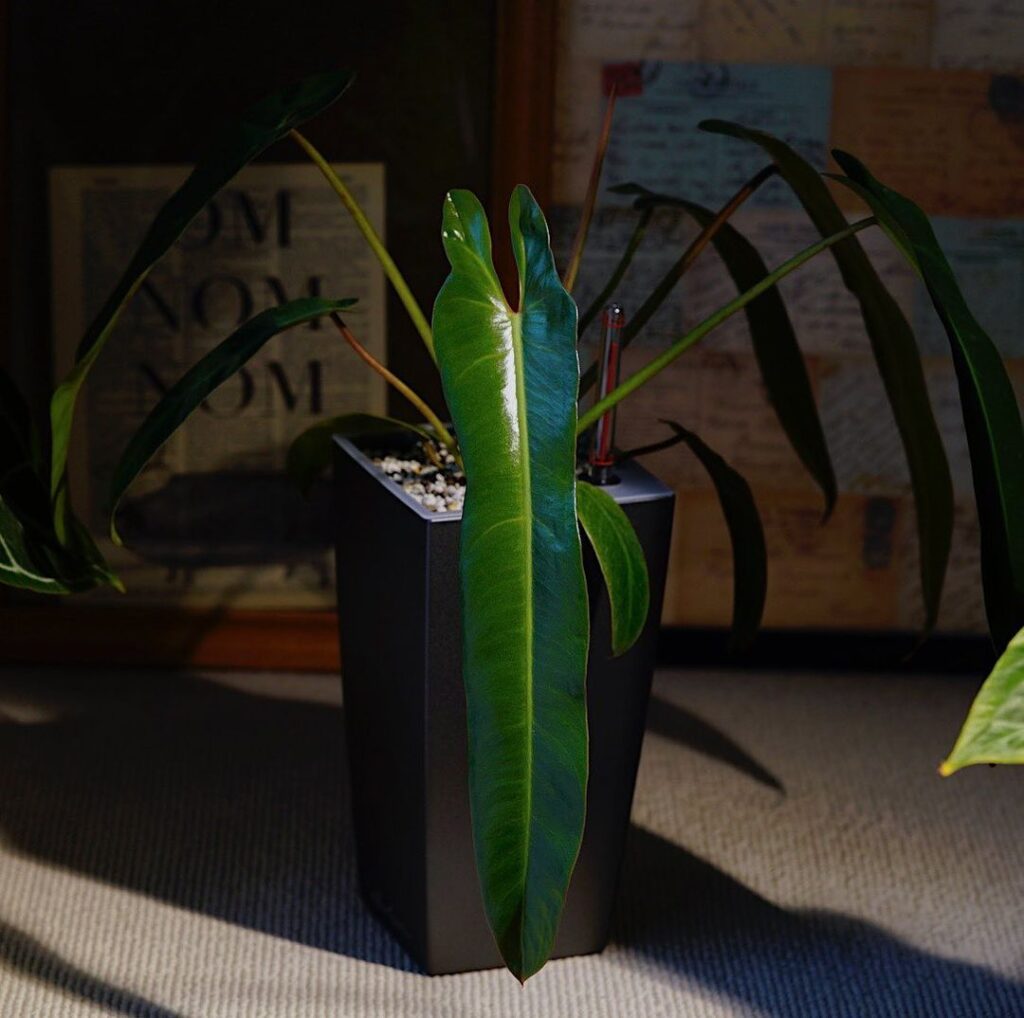
A magnificent and simple-to-care-for plant, the Philodendron Spiritus-Sancti will add flair to any indoor garden. Indoor gardeners adore this houseplant because of its unique look and extreme rarity. But how can you ensure that this extremely premium plant survives?
Keep reading all the way below to know the right care for the Philodendron Spiritus-Sancti.
Philodendron Spiritus Sancti Profile

General Information
Philodendron Spiritus-Sancti, sometimes called Philodendron Santa Leopoldina and Philodendron Sanctum, is a member of the Araceae family and is in the genus Philodendron. It first appeared in Espirito Santo’s jungles, a state in Brazil.
One of the most exotic and well-liked vining houseplants in recent years, Philodendron Spiritus-Sancti, has gained popularity as an indoor plant due to their rarity.
These plants are hard to find in their natural habitat and can be quite difficult to cultivate. Even experienced plant collectors and gardeners have a hard time growing this exotic, coveted plant.
The Philodendron Spiritus Sancti leaves are dark green which are slender and sword-shaped. These leaves can grow up to 30 inches long when mature. The petioles that link the leaves to the stems of the Philodendron Spiritus-Sancti range in length from 12.75 to 23.60 inches.
Etymology
The name “philodendron” comes from the Greek words “philo”, meaning “love” and “affection”, and “dendron,” meaning tree. So the Philodendron is loosely translated as “tree huggers” with these meanings. This is because the Philodendron plants are often seen in the wild as tree climbers.
The epithet name of Philodendron Spiritus Sancti is derived from “Spiritus Sanctus,” which is Latin for the Holy Spirit or Holy Ghost in Christianity. It refers to a rare kind of tropical climbing plant.
Flowering
The Philodendron Santa Leopoldina has symmetrical white blossoms. The plant’s capacity to blossom most likely only depends on the size and maturity of the plant. Bigger, older plants will produce more flowers since they can absorb more energy from the sun.
Locally, Spiritus-Sancti blooms around November and December or close to the height of summer.
Season of Interest and Purchasing
These plants may be grown and multiplied most effectively in the spring and summer, since this is the plant’s growing season. This plant makes a lovely decorative plant for indoor and outdoor gardens. Anyone who appreciates tropical plants would surely love the Philodendron Santa Leopoldina.
Growth
The Philodendron Spiritus-Sancti plant grows its leaves to a maximum height and breadth of 23.6 inches and 4.5–4.9 inches, respectively. It is a plant that can grow on trees and gets its nourishment from the rain and air.
Philodendron Spiritus-Sancti Overview
| Scientific name | Philodendron spiritus-sancti |
| Common name/s | Philodendron Santa Leopoldina |
| Family | Araceae |
| Growth Habit | Herbaceous, Hemiepiphytic Vine |
| Height and Spread | up to 65 feet longt, 6 feet wide |
| Classification based on life cycle | Perennial |
| Origin and Distribution | Originated from South America |
| Climate Zone | Generally mild climate |
| USDA Plant Hardiness Zone | USDA Zone 10-12 |
| Color | Dark green leaves that are slender and pendant-shaped |
Related: Philodendron rugosum: The Care, Propagation, and Watering Guide You Need
Care Tips
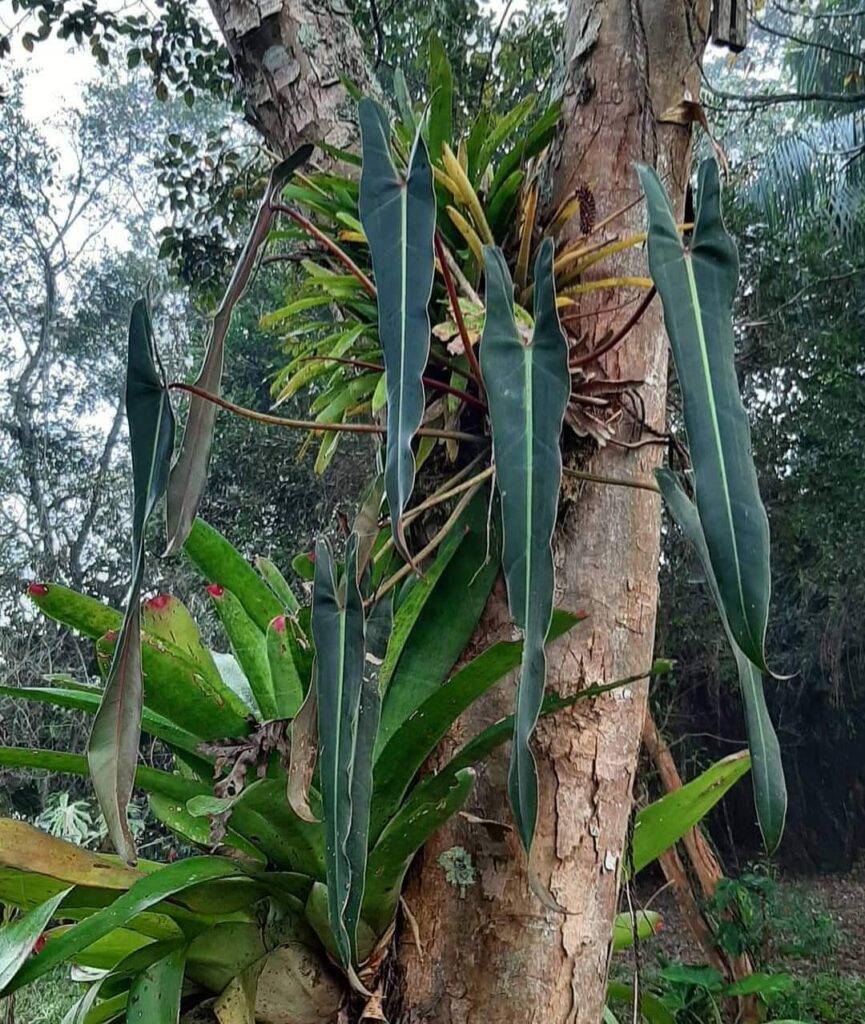
Photo Credit (@acta_botanica)
Light Requirement
Philodendron Spiritus-Sancti’s native environment, the Brazilian rainforests, should be imitated for the best growth circumstances. The plant thrives in bright indirect light with a few hours of direct morning sunshine.
For Philodendrons to thrive, light is essential, just as it is for other tropical plants. However, they tend to be light-sensitive and are prone to burning. Overexposure to sunlight can cause drooping and yellowing of the leaves.
On the other hand, low light levels don’t stop Philodendrons from growing, but they will be having slow growth with stunted development. Do not soil Philodendron Spiritus Sancti leaves to make them more efficient in gathering light. Dust them off when needed.
Temperature Requirement
If you give a plant an environment that is pleasant for it to grow in, nothing will go wrong. The Philodendron Spiritus Santi favors growing in environments with consistent temperatures between 70 and 80 degrees Fahrenheit (21 and 29 degrees Celsius).
Your Philodendrons are neither frost nor cold-resistant, so don’t leave them out in temperatures below 50 degrees Fahrenheit. If such is the case, the plant will have significantly stunted development, which will result in few leaves, withering, or even death.
Since misting helps to maintain moisture and lower temperatures, it could be a solution.
Water Requirement
Providing the right amount of water to a houseplant is one of the most important aspects of care. Drought-tolerant Philodendron Spiritus Santi doesn’t need to be watered regularly.
However, it might be challenging to water the Philodendron Spiritus-Sancti since you have to be careful not to overwater it while still making sure you do not deprive it of the moisture it needs.
Remember, it’s critical to keep the plant moist, but you should also avoid over-watering. Like most Philos, the soak and dry technique ensures that you constantly feed your plant the proper quantity of water.
To water your plant, check the soil first. Stick your fingers into the topmost soil; if they are completely dry, your plant needs watering. Please pay attention to its leaves also. When it starts to have drooping leaves or yellow leaves, it means your plant is being overwatered or underwatered.
To avoid this, rectify your watering schedule to your Sancti to about twice a week, depending on your indoor air quality, climate, and moisture level. You may use tap water for this plant.
Humidity Requirement
The Philodendron Spiritus Sancti grows best when the relative humidity is just about 80%. On the other hand, this plant can withstand low humidity levels, even as low as 20%.
The Philodendron Spiritus Sancti becomes easily dissatisfied when the humidity levels in its immediate surroundings change abruptly. Therefore, you should maintain humidity levels consistently.
A humidifier, mist, or pebble tray can all help you accomplish it. It contributes to creating a more humid atmosphere that is perfect for growing different houseplants and maintaining their long leaves, vivid colors, and strong stems.
Soil Requirement
The soil is one of the elements influencing the health and growth of the plant. The ideal soil conditions for Philodendron Spiritus-Sancti are well-draining, porous, and airy soil mix with a pH range of 5.6 to 7.5. You can achieve this by mixing your garden soil with perlite, orchid bark, charcoal, and these ingredients.
To your mixture, you can also add some chopped sphagnum moss. Any soil mix can benefit from perlite’s modification of the substructure, which improves aeration and drainage capabilities while preventing compaction.
Fertilizer Requirement
The Philodendron Spiritus-Sancti grows well with little or no fertilizer. As an epiphyte, this aroid thrives with minimal fertilization, as it must survive in the wild on the nutrients provided only by the wind, rain, water, and falling leaves.
As a result, a soil combination containing organic matter may be all that your plant needs.
However, you can boost the growth of your Philodendron by feeding it regularly. It is advised to add some slow-release fertilizer and feed once a month to encourage growth in the spring and summer. For philodendrons, a fertilizer with an NPK ratio of 20:20:20 is ideal.
Prior to use, always dilute the fertilizer to half its original strength by adding an equivalent amount of water. Use an all-purpose fertilizer or liquid fertilizer if you choose, but be sure it contains a lot of nitrogen. The nitrogen makes sure that your plant’s leaves develop into a rich, stunning shade of green.
Space Requirement
Your tropical plant will need planters or containers with efficient drainage holes, so the soil does not get soggy for an extended period of time. Waterlogged soil leads to root rot, one of the biggest problems of Philodendrons and other houseplants. Make sure to give this plant ample room to flourish.
Related: Philodendron Rojo Congo: The Best Care, Propagation, and Watering Guide You Need
Growing and Planting Tips
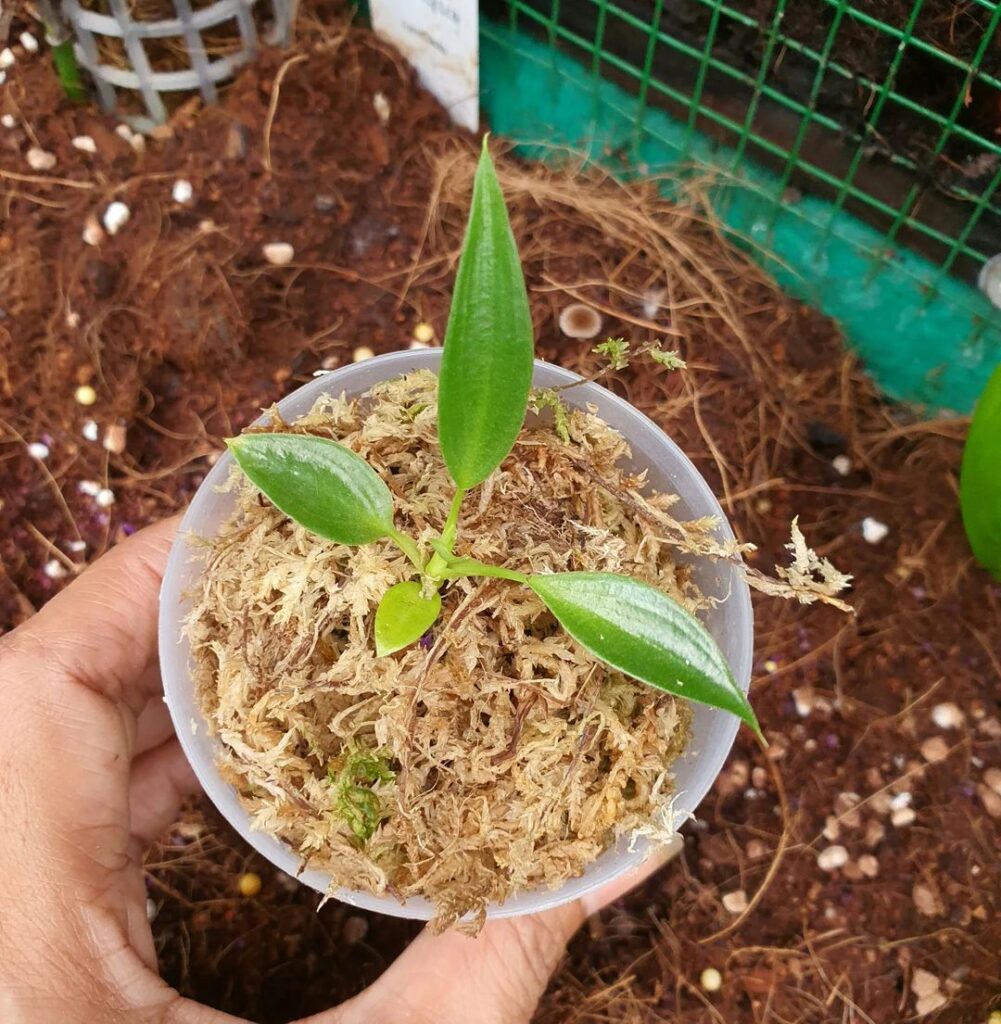
Propagation
The only viable technique to reproduce a Philodendron Spiritus-Sancti is by stem cutting and air-layering.. Below are the detailed steps to successfully propagate Philodendron Spiritus-Sancti:
Propagation by stem cuttings
Stem cuttings are the most common technique of propagation. You may easily propagate them by acquiring a stem cutting with at least one leaf node and one leaf. The stem should then be cut to a length of 4 to 6 inches before being placed in a tiny container made of damp sphagnum moss and perlite. The moss should be damp but not soggy.
Once the cutting’s roots have taken hold, they can be treated as a separate plant and let develop in the desired location. Transplant young roots into potting soil after their length reaches 1 to 2 inches.
Propagation by Air layering
This procedure promotes the growth of roots on the stems of indoor landscaping plants that have become “leggy” due to the loss of their lower leaves. First, choose stems that are healthy and solid, with aerial roots sprouting from the leaf nodes.
After selecting a stem, wrap the healthy node with roots and a pole in damp sphagnum moss.
This helps in the support of weaker stems that cannot handle the weight of the moss and the pole on their own. Next, wrap the node in a glass or damp towel to keep the moss moist. Remove the covering and inspect it once a week to ensure the moisture level and monitor the root development of the sphagnum moss.
Pruning
Pruning is necessary to keep Philodendron Spiritus-Sancti under control indoors. Without trimming, the plant may reach heights of 10 to 12 feet and is a long vine similar to other Philodendrons. Prune the plant’s top portion to lessen its size and weight because it is hefty. Wait for the brown or yellow leaves to fall naturally.
Pruning dying branches and stubs frequently in the spring or fall will encourage healthy growth and improve their appearance.
Potting And Repotting
Philodendron Santa Leopoldina may be planted in ceramic, terracotta, or clay pots since they allow for optimum aeration and protect your plant from overwatering illnesses.
Choose a pot that is 1-2 inches larger in diameter than the root ball of your plant. It would allow you to check the condition of the roots without having to remove the plant from the pot.
Consider giving it a fresh pot in the early spring every one to two years. Make sure the pot has drainage holes, is two inches larger than the old one, and the potting soil is new and of the best quality before repotting. Your plant will feel revitalized and renewed afterward.
Philodendron Spiritus-Sancti Care
| Light | Bright indirect light |
| Temperature | Intermediate to warm, 70-80 degrees Fahrenheit |
| Water | Once a week, increased in summer, decreased in winter |
| Soil | Airy, well-draining soil; not too loose |
| Fertilization | Regular household fertilizer, once a month |
| Space | Minimal space |
| Propagation | Via stem cutting propagation and air layering |
| Blooming | Rarely blooms, enough sunlight and maturity needed |
| Pruning | Regular pruning |
| Potting | Regular potting mix, use of horticultural charcoal, perlite and coco coir, sphagnum peat moss |
Problems And Troubleshooting
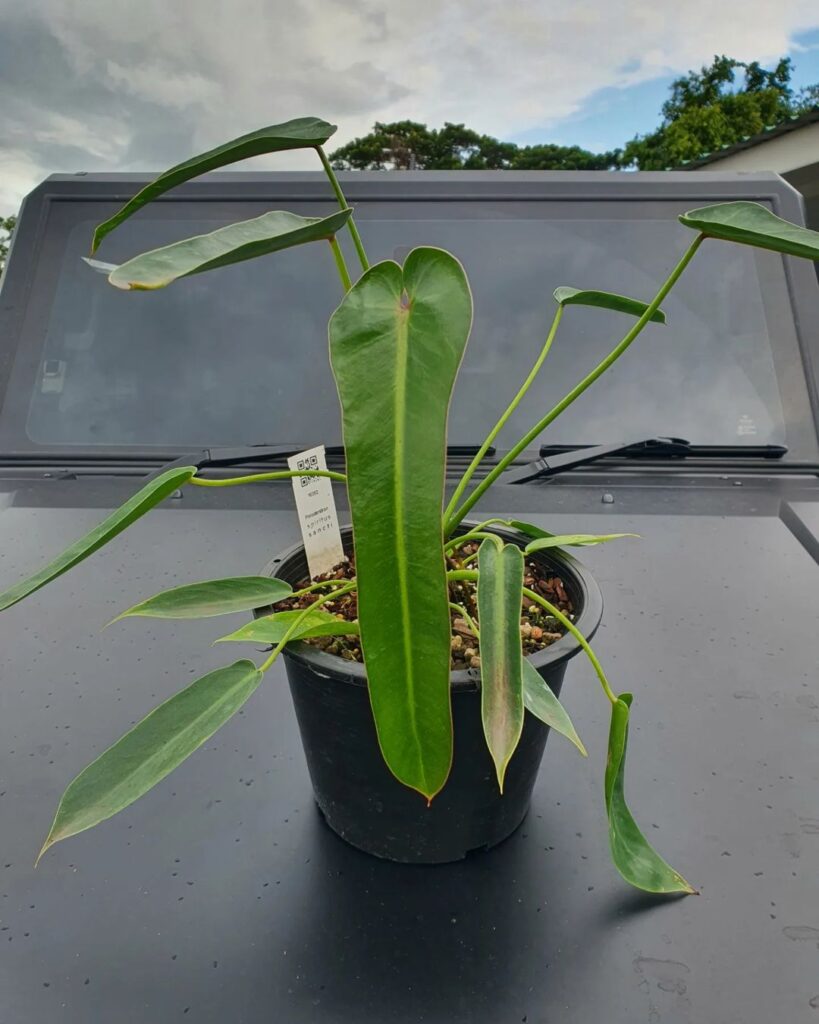
Overwatering
Philodendron plants drown when they are overwatered. Overwatering causes yellowing leaves and stunted, sluggish development. Plants may experience leaf burn or scorch, root rot, soggy soil, or even demise.
To lessen the effects of overwatering, think about modifying the container and soil to enable better drainage and better soil drainage. Additionally, make sure your planter has good drainage, and if at all feasible, leave enough room around the roots for air to circulate.
Underwatering
Underwatering of Philodendrons results in dry leaves, brown leaf tips, leaves drops, wilting, and curled leaves. The topsoil is another telling indication of when a plant is drowning. Think about the factors that might result in underwatering. Usually, this is the result of neglecting to pay attention to the demands of the plant.
Maintain the plant’s watering schedule and provide it with bright, indirect light to guarantee its survival. Water it well, particularly to reach the roots, and attempt to space out your watering more often.
Nutrient Deficiency
Nutrient deficiencies can cause slower growth, leaf browning, paler patterns, and other symptoms. To avoid this problem, feed your plant to stimulate root growth and thicker leaves. On the other hand, this houseplant does not require much fertilizer, especially if you use a high-quality organic potting mix.
Fertilizer with nitrogen, phosphorus, potassium, and sulfur is frequently used to have green, lush growth.
Flowering Problems
Due to the inflorescence’s brief fertile phase and the plant’s offset of male pollen production from the female receptivity, pollination is often difficult and difficult to complete, as with other Philodendrons.
Until recently, Spiritus-Sancti pollination has not received much attention from researchers, which prevented it from being widely reported.
Yellowing And Drooping
Yellowing of the leaves or other leaf discoloration, usually means your plant is getting an excessive amount of direct sunlight. Therefore, you may opt to move it to a different placement where it will not receive extra direct light or where it’s shaded with sheer curtains.
Meanwhile, drooping may be a result of excessive or insufficient amounts of water. To address this, adjust your watering schedule appropriately and always check your soil before giving water to your Philodendron.
Diseases
Any plant can be susceptible to diseases if not properly taken care of. Particularly, plants of this family are affected by Septoria Leaf Spot and Alternaria Leaf Spot, which result in fungal growth. Usually, these are also due to over-watering the plants.
Therefore, take action immediately when you see yellowing (Septoria) or brown spots (Alternaria).
You can treat your plants with a copper-based fungicide, and make sure to be attentive to the watering conditions for it not to happen again.
Pests
Houseplants are also susceptible to pest problems; unfortunately, Philodendron is not a pest resistant plant.
If you observe the presence of pest infestation, the best thing to accomplish is to remove that plant and separate it from the other plants in your collection to avoid further infestation. These pests love to spread from plant to plant, so it is best to be proactive and isolate the infected plant.
The next thing to do, and frankly the easiest and simplest method, is to spray your plant with neem oil. Mix two teaspoons of neem oil and a teaspoon of soap in a spray bottle to make this spray.
Add water to fill the bottle and shake properly. Spray the plant lightly, including its undersides, and repeat the treatment every 5-7 days.
Neem oil is a natural pesticide that makes it difficult for these bugs to respirate.
Philodendron Spiritus-Sancti Pests And Diseases
| Common Pests/Diseases | Symptoms | Treatment and Prevention |
Common diseases include crown rot, stem rot, root rot, leaf spot, fungal diseases, and Xanthomonas infection | Yellowish rimming around black or dark brown spots on leaves | Avoid overwatering. Keep soil dry. Avoid too high humidity. Proper ventilation is needed around the plant. Remove infected parts of fungal infections to avoid spreading |
| Common pests include mealybugs, spider mites, aphids, and scales | Visible insects on the surface | Spray plant with warm, soapy water. If infestation is present, use insecticide or neem oil. Use diatomaceous earth. |
Related: Philodendron Red Emerald: The #1 Care, Propagation and Watering Guide
Problems With People And Animals
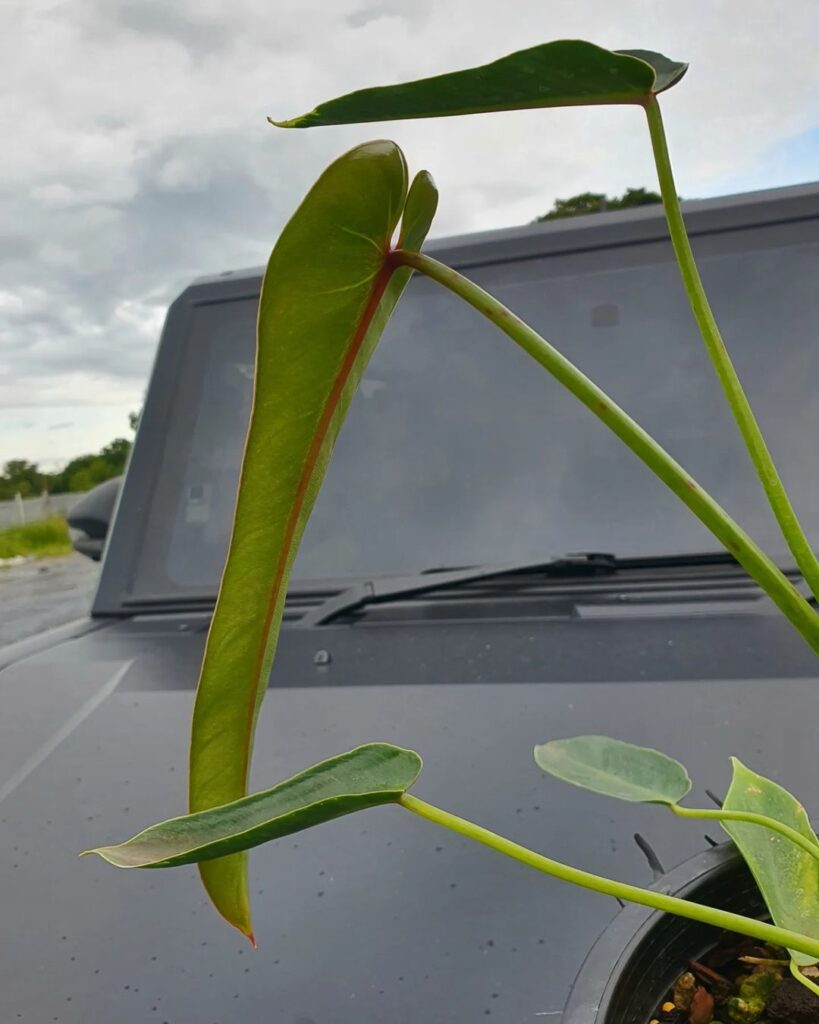
Toxicity
All Philodendrons, including the Philodendron Spiritus-Sancti, are toxic to people and pets. They may look harmless, but they contain a calcium oxalate compound that is unsafe for humans and animals as well. They could cause skin rashes and other allergies if they come into contact with the skin.
If accidentally consumed, your plant may cause mild to severe physical or internal discomfort, including stomach issues, swollen lips, and tongue. Make sure to place the plant out of reach from small children, cats, and dogs.
Philodendrons Plants Meaning And Symbolism
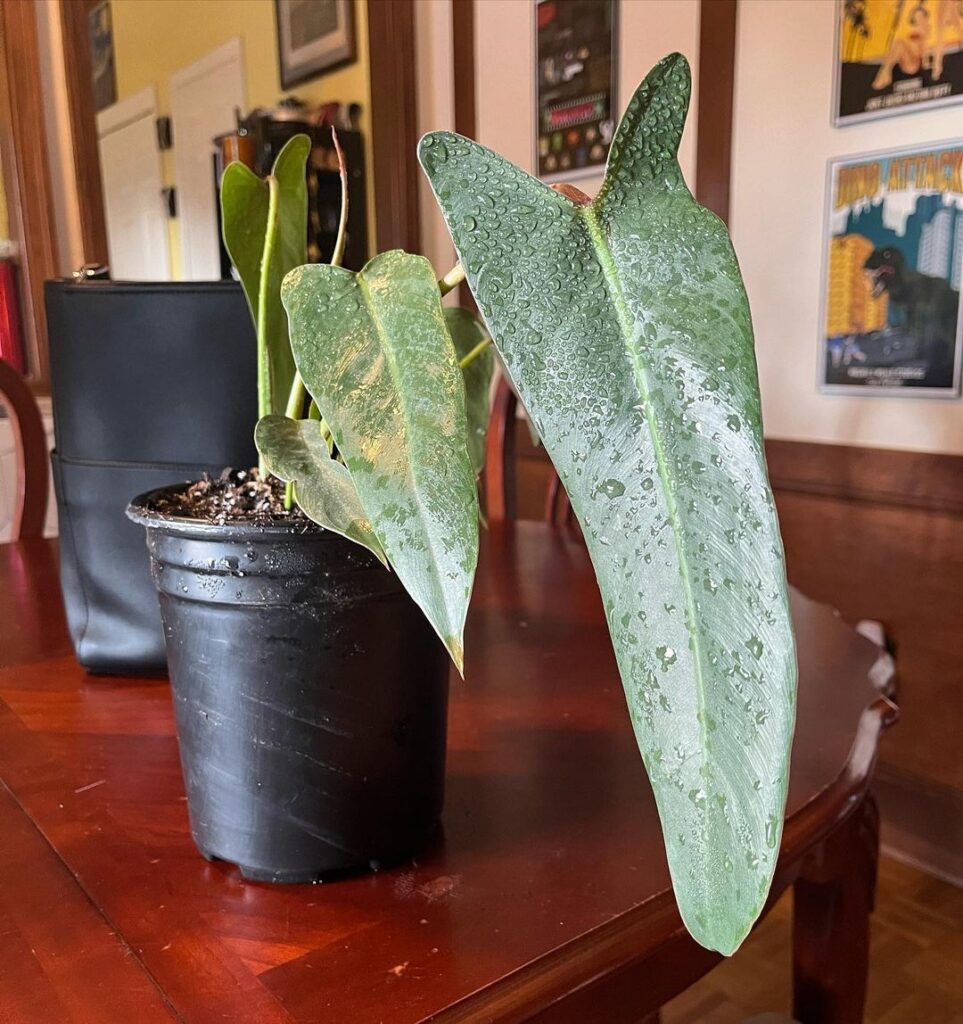
Philodendrons are said to symbolize love of nature, perfect for plant lovers and those who have a strong passion for eco-friendly living.
They are a great present for someone going through a significant life event or making personal adjustments because they symbolize personal growth. The plant represents well-being and abundance.
Additionally, it acts as a green muse for creatives. In his work “Woman in the Garden,” Pablo Picasso employed a philodendron, and Daphne, the nymph, is shown with the leaves. Philodendrons are renowned for being an excellent choice for enhancing indoor air quality.
Philodendron Spiritus-Sancti Symbolism And Meaning
| General Meaning | love of nature, passion for eco-friendly living |
| Symbolism | Personal growth, well-being,abundance |
Landscaping And Gardening Ideas
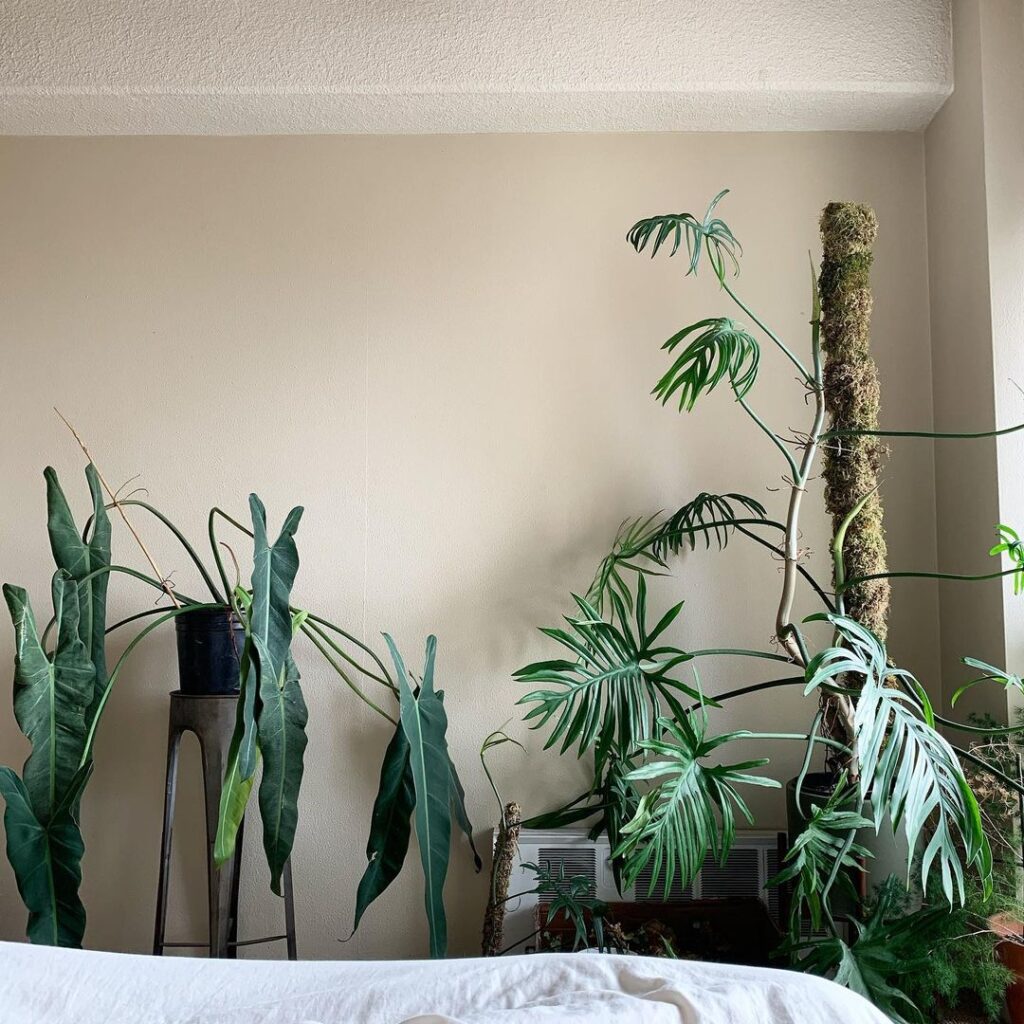
Companion Plants
You might combine the following other philodendron plants with your Philodendron Spiritus Sancti. Another fantastic kind of Philodendron called “Philodendron Brandtianum” is a creeping vine that makes a wonderful addition to your Sancti.
Finally, the “Philodendron Prince of Orange” is a good companion plant with a flaming red-orange to an orange and dark yellow hue.
Landscaping Ideas
Medium-sized Philodendrons go well as accents inside a humid room, cozy deck, or patio. A full plant can also be placed in the corner of the house or along the entryway. Outdoors, it can be a filler plant for a garden corner, in between palm trunks, or under tall trees.
It can also be placed near pools to add even more tropical vibes as long as it won’t get splashed at.
| What to plant with | Philodendron brandtianum, Philodendron Prince of Orange, Other Philodendrons |
| What NOT to plant with | Basically nothing |
Conclusion
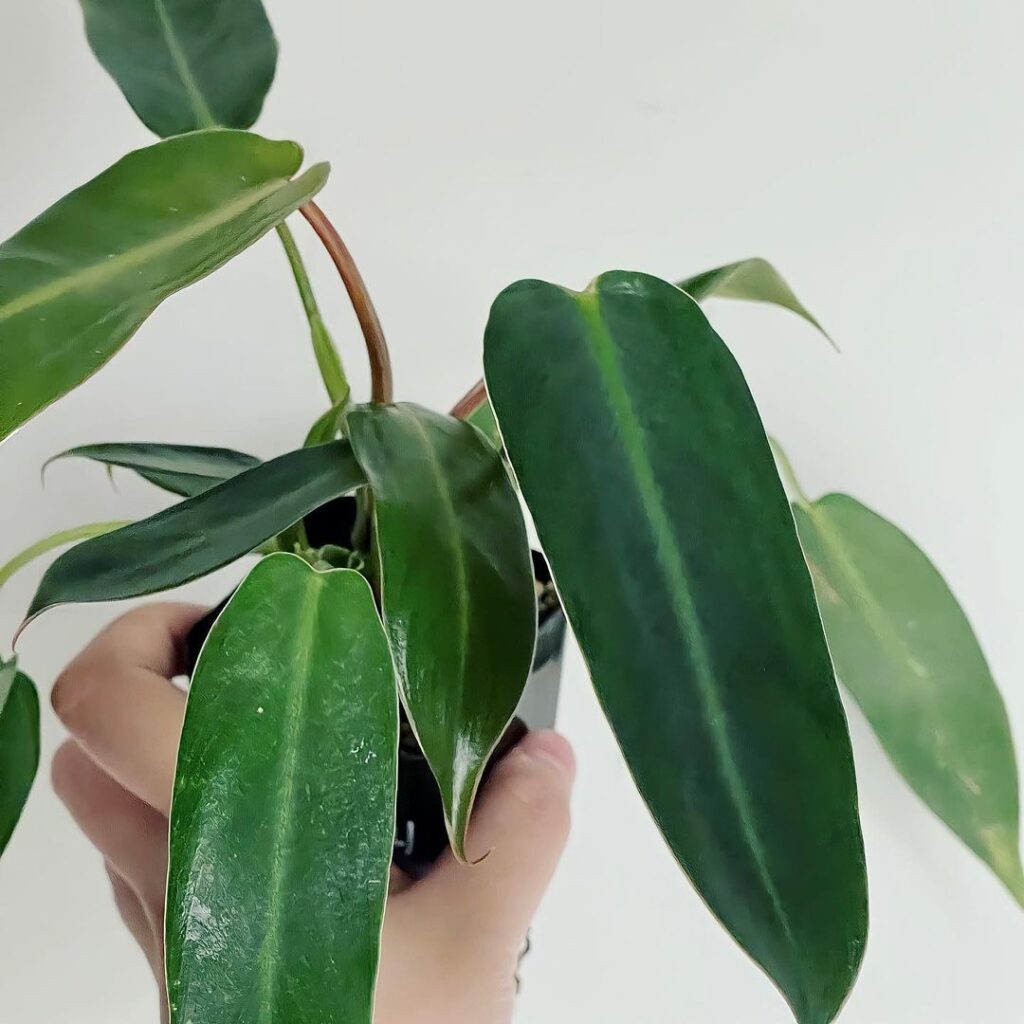
Philodendron Spiritus-Sancti makes a great choice as a houseplant because of its distinctive characteristics and striking look – not to mention its extreme rarity. There is no more premium plant than a Spiritus-Sancti.
This plant is one of the bests you can get, if not the ultimate, since it creates a stunning visual spectacle and signifies a regal status. Just make sure to follow the tips above, and your plant will surely give back the love they take from you.
Frequency Asked Questions
Why Is Spiritus Sancti expensive?
Philodendron Spiritus Sancti is an extremely rare species of Philodendron with a high demand which is why it is expensive. It is a sought-after plant by collectors and houseplant enthusiasts.
This plant is considered an endangered species as there are only a few left in the wild. In fact, there are more Spiritus Sancti in cultivation than there are in their natural habitats.
How much does a Spiritus Sancti cost?
The price of the Philodendron Spiritus Sancti ranges from $500 to $6000, depending on the size of the plant and your location. Some sellers sell this plant for as much as $12,000 or beyond.
However, tissue cultured and seed grown plants can be purchased in a smaller price.
What does Spiritus Sancti mean?
Spiritus Sancti directly means the Holy Spirit or the Holy Ghost.
Is Philodendron Spiritus Sancti fast-growing?
Philodendrons are relatively fast-growing plants. This includes your Spiritus-Sancti.
Is Spiritus Sancti in tissue culture?
Since it became a mainstream plant in recent years, the Philodendron Spiritus Sancti has been the focus of many plant breeders and plant tissue culturists.
Editor’s Recommendations
Philodendron Splendid: The Fail-Proof Care, Propagation, and Watering Guide You Need
Philodendron verrucosum: The Number 1 Care, Propagation, and Watering Guide for This Velvety Plant
Philodendron White Princess: The Complete Care, Propagation, and Watering Guide You Need







